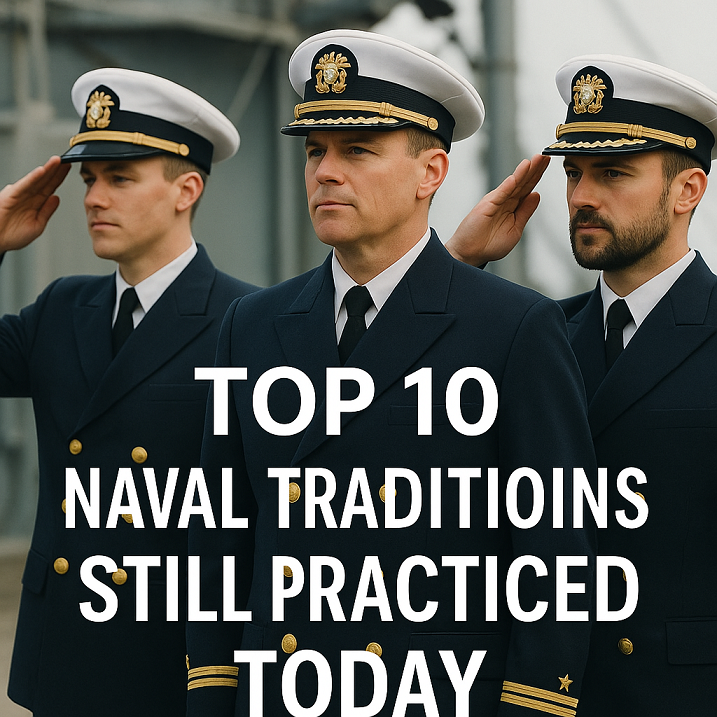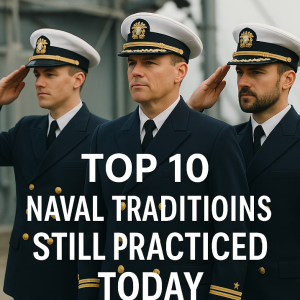Explore the top 10 naval traditions still practiced today and uncover their fascinating origins. Discover how time-honored customs continue to shape modern naval operations worldwide.
Why Naval Traditions Matter in Modern Maritime Operations
In an age where autonomous navigation, cyber-defense, and artificial intelligence are redefining maritime security, one might assume that centuries-old naval customs would vanish. Yet, naval traditions continue to thrive—not merely as ceremonial formalities, but as essential elements of morale, discipline, and identity within naval forces worldwide.
These traditions serve to bridge generations, providing continuity in a high-stakes, high-structure environment. Whether on board nuclear-powered aircraft carriers or amphibious assault ships, naval personnel today observe rituals that have roots in wooden sailing ships from the 17th century.
According to a 2023 report by the Royal United Services Institute (RUSI), 83% of naval personnel in Commonwealth and NATO member states consider long-standing traditions crucial to maintaining esprit de corps and organizational cohesion.
The Evolution of Naval Tradition
Naval traditions were born out of necessity, evolved through warfare, and were preserved through discipline. From salutes and ceremonies to songs and superstitions, these practices helped instill hierarchy, accountability, and camaraderie aboard ships that were often isolated for months.
Historically, traditions differed between navies—the Royal Navy, U.S. Navy, and Imperial Japanese Navy all developed their own customs. However, globalization and multilateral exercises (such as RIMPAC or NATO’s BALTOPS) have contributed to a convergence of naval culture, preserving core traditions while adapting them to modern realities.
Top 10 Naval Traditions Still Practiced Today
1. Crossing the Line Ceremony (Crossing the Equator)
Origin: Dating back to the Age of Sail, this ceremony marked a sailor’s first crossing of the Equator. “Pollywogs” (those who had never crossed) were initiated by “Shellbacks” through elaborate rituals.
Modern Practice: Militaries including the U.S. Navy, Royal Navy, and Indian Navy still conduct this rite of passage—now regulated to prevent hazing but rich in pageantry. Certificates are awarded, and Neptune’s Court is symbolically invoked.
Reference: U.S. Navy Traditions Guide
2. Ship Commissioning and Decommissioning
Origin: Commissioning dates to the 17th century, when naval vessels were officially placed into service with formal authorization from a sovereign.
Modern Practice: Today’s ceremonies are held with diplomatic protocol, involving national anthems, dignitaries, and formal handovers. Decommissioning is equally ceremonial, marking the retirement of a ship with honor.
Example: HMS Queen Elizabeth was commissioned in 2017 with the Queen present, symbolizing its strategic role in Britain’s naval future.
3. Morning and Evening Colors
Origin: Traditionally, flags were raised and lowered to signify watch changes and naval presence.
Modern Practice: The U.S. Navy, Royal Canadian Navy, and others observe the raising (0800) and lowering (sunset) of national ensigns with salutes and silence. It reaffirms duty and respect for country.
Note: Crew on deck are required to stand at attention and salute, regardless of location—even in foreign ports.
4. The Bosun’s Call (Boatswain’s Pipe)
Origin: This high-pitched whistle was used to issue commands above the din of sails and wind.
Modern Practice: Now ceremonial, it’s used during honors, boarding ceremonies, and farewells. Each call (e.g., “Still,” “Pipe the Side”) has specific historical meaning.
Fun Fact: The U.S. Navy still trains Boatswain’s Mates in piping techniques during A-school.
5. The Wardroom and Mess Etiquette
Origin: Naval officers’ messes fostered class distinction and hierarchy aboard 18th-century ships.
Modern Practice: Naval wardrooms today uphold strict etiquette—officers must ask permission to join or leave the table, maintain uniform standards, and observe toasts during formal dinners.
Cultural Insight: Toasts to the sovereign, fallen comrades, and the navy are a common tradition across NATO and Commonwealth navies.
6. Gun Salutes
Origin: Warships would discharge all their guns to show they came in peace. Over time, this evolved into a structured salute format.
Modern Practice: Navies now fire salutes in odd numbers—21 being the highest honor—during national holidays, funerals, or visits by heads of state.
Regulatory Reference: NATO Saluting Protocol – Naval Command Manual
7. The Bell Ceremony
Origin: Ship’s bells were used to mark time and keep watches. They also served ceremonial roles.
Modern Practice: Today, bells are rung during important rituals—such as baptisms, retirements, and changes of command. Some navies engrave names on the bell when used for christenings.
Historic Example: USS Arizona’s salvaged bell is now at the University of Arizona, tolled during solemn events.
8. Change of Command Ceremonies
Origin: Naval hierarchies demanded a formal transfer of authority to maintain order.
Modern Practice: These ceremonies are highly structured, involving reading of official orders, salutes, and symbolic handing over of the ship’s log or colors.
Psychological Insight: This ritual reinforces respect for command and a sense of continuity during transitions.
9. Burial at Sea
Origin: Practical necessity aboard ships evolved into solemn ritual, with prayers and flag-covered bodies consigned to the deep.
Modern Practice: Many navies still offer burial at sea for active members, retirees, or veterans. The U.S. Navy provides it aboard operational vessels, often with a chaplain present.
Legal Context: Governed by national and international maritime burial laws and environmental regulations.
10. Jackstaff and Ensign Traditions
Origin: Flag positioning on a ship was a visual signal of allegiance and status.
Modern Practice: Ships fly the national ensign from the stern when moored and from the gaff underway. The jack (a special naval flag) is flown from the bow when anchored.
Recent Update: In 2020, the U.S. Navy reinstated the Union Jack for use on all ships.
–
Real-World Applications and Institutional Significance
Naval Academies and Officer Training
Institutions like Britannia Royal Naval College, the U.S. Naval Academy, and India’s INA incorporate tradition into daily routines. Reveille, formations, and ceremonial drills foster discipline and heritage appreciation.
Multinational Exercises and Diplomacy
Naval traditions also play a diplomatic role. Events like Fleet Weeks, joint exercises, or international port calls often include honor guards, exchange of plaques, and shared ceremonial practices that strengthen naval diplomacy.
Example: During RIMPAC 2022, participating navies from over 20 nations upheld traditional customs during ship visits and joint operations, reinforcing interoperability and mutual respect.
FAQ – Naval Traditions
Q1: Are naval traditions mandatory or symbolic?
Most traditions are ceremonial but are taken seriously. They reinforce order, heritage, and unity.
Q2: Can civilians attend naval ceremonies?
Yes, ship commissionings, retirements, and Fleet Weeks often include public access.
Q3: Are there variations in naval traditions between countries?
Yes. While core traditions are similar, cultural interpretations differ. For example, Japanese naval ceremonies emphasize Shinto elements.
Q4: Are there female-specific naval traditions?
While older navies had gendered traditions, modern forces focus on inclusion. Ceremonial roles are now gender-neutral.
Q5: How do traditions impact morale?
They provide stability, identity, and camaraderie—particularly during long deployments or in multinational crews.
Q6: Are these traditions still relevant in the digital era?
Absolutely. They humanize the experience and bridge generational and technological divides in a highly technical profession.
Q7: What happens to ship’s bells and artifacts when a vessel is decommissioned?
They are often sent to museums or preserved by naval heritage commands.
Conclusion: The Soul of the Ship Lies in Tradition
Naval traditions are not anachronisms—they are the living soul of maritime service. They bind crews together, create a shared history, and bring order to the uncertainty of the sea. Whether marking a sailor’s first crossing of the Equator or saluting at sunset, these rituals continue to shape naval identity across generations and geographies.
In a time when navies invest in quantum navigation, AI-driven systems, and cyber resilience, it is telling that centuries-old ceremonies still hold sway on the quarterdeck. They remind us that while the technology may change, the human spirit of seafaring endures.
References
-
RUSI (2023). Naval Culture and Strategic Leadership Survey.


